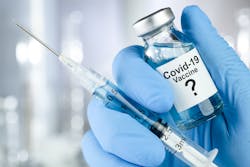Following its 20-23 March meeting, the World Health Organization’s Strategic Advisory Group of Experts on Immunization (SAGE) revised the roadmap for prioritizing the use of COVID-19 vaccines, to reflect the impact of Omicron and high population-level immunity due to infection and vaccination.
The roadmap newly considers the cost-effectiveness of COVID-19 vaccination for those at lower risk – namely healthy children and adolescents – compared to other health interventions. The roadmap also includes revised recommendations on additional booster doses and the spacing of boosters. The current COVID-19 vaccines’ reduction of post-COVID conditions is also considered but the evidence on the extent of their impact is inconsistent.
The revised roadmap outlines three priority-use groups for COVID-19 vaccination: high, medium, and low. These priority groups are principally based on risk of severe disease and death, and consider vaccine performance, cost-effectiveness, programmatic factors and community acceptance.
The high priority group includes older adults; younger adults with significant comorbidities (e.g. diabetes and heart disease); people with immunocompromising conditions (e.g. people living with HIV and transplant recipients), including children aged 6 months and older; pregnant persons; and frontline health workers.
For the high priority group, SAGE recommends an additional booster of either 6 or 12 months after the last dose, with the timeframe depending on factors such as age and immunocompromising conditions. All the COVID-19 vaccine recommendations are time-limited, applying for the current epidemiological scenario only, and so the additional booster recommendations should not be seen as for continued annual COVID-19 vaccine boosters. The aim is to serve countries planning for the near- to mid-term.
The medium priority group includes healthy adults – usually under the age of 50-60 – without comorbidities and children and adolescents with comorbidities. SAGE recommends primary series and first booster doses for the medium priority group. Although additional boosters are safe for this group, SAGE does not routinely recommend them, given the comparatively low public health returns.
The low priority group includes healthy children and adolescents aged 6 months to 17 years. Primary and booster doses are safe and effective in children and adolescents. However, considering the low burden of disease, SAGE urges countries considering vaccination of this age group to base their decisions on contextual factors, such as the disease burden, cost effectiveness, and other health or programmatic priorities and opportunity costs.
Other meeting highlights include:
- Polio
- Regional reports on measles
- Status of new tuberculosis vaccines
- Malaria
- Identifying priority pathogens for new vaccines

